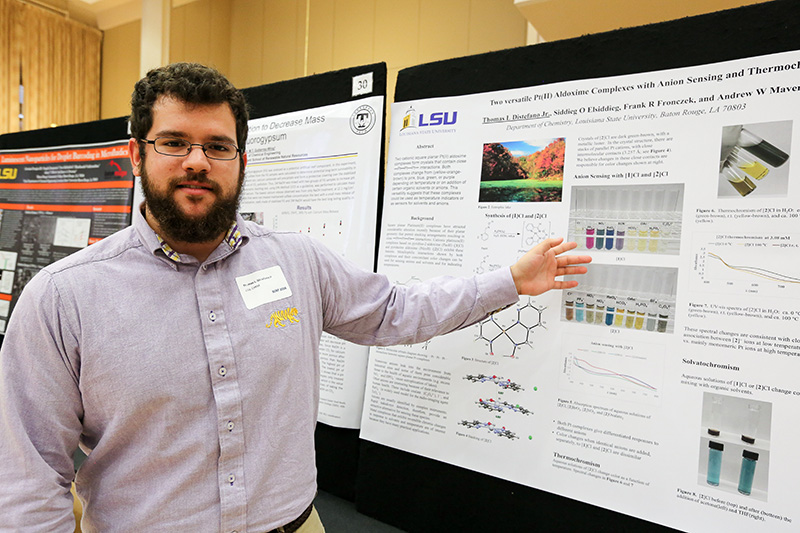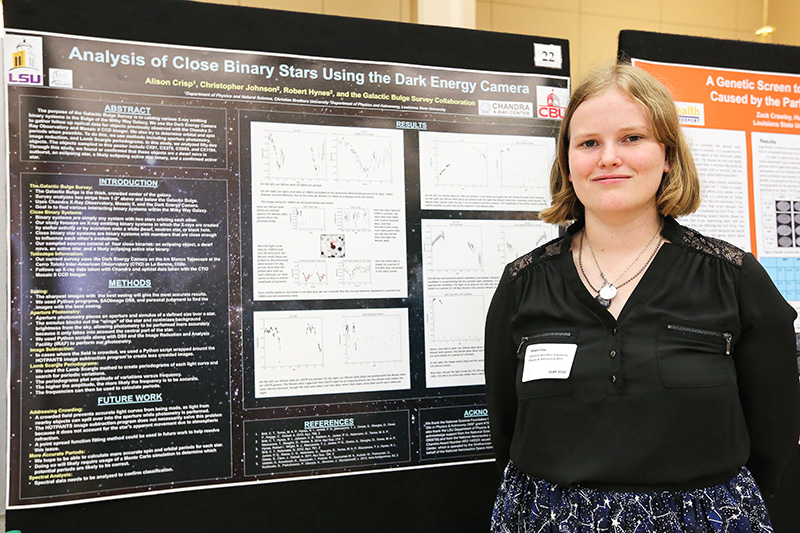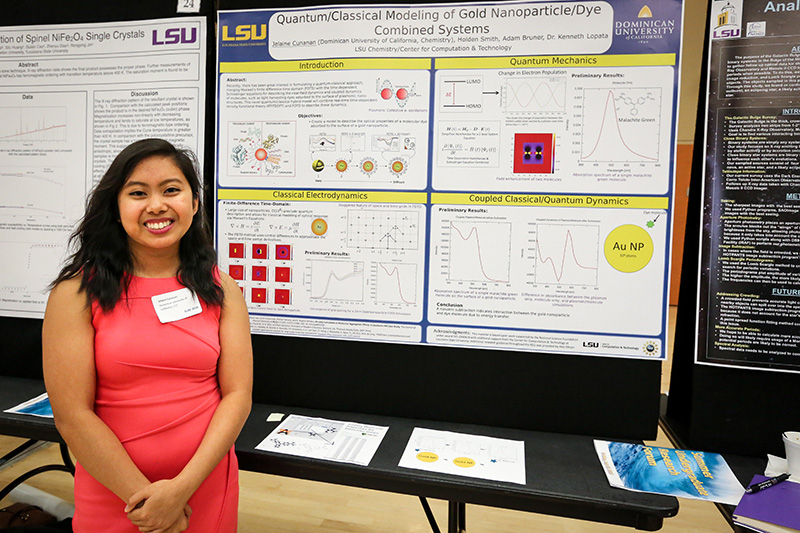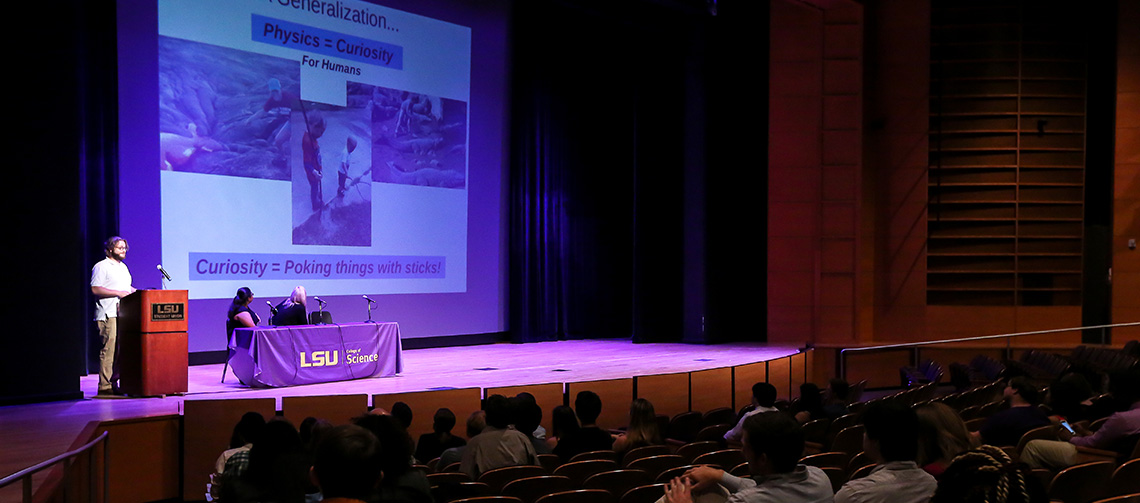LSU Summer Undergraduate Researchers Talk Research and What They’ve Learned This Summer at SURF 2016
By Paige Jarreau

Thomas Distefano presenting his poster at SURF 2016.Photo by Paige Jarreau
Nearly 100 students representing LSU and many other universities presented the culminations of their summer-long research projects at the 2016 Summer Undergraduate Research Forum (SURF) on Friday, July 29. The LSU Union Ballroom buzzed with excitement as students talked to their parents, friends, staff and faculty at LSU, among others, about what they had accomplished over the summer.
SURF 2016 poster presentation participants represented dozens of undergraduate research
programs that take place throughout the LSU System every summer, including Chemical Engineering REU (CHE), Physics & Astronomy Research Experiences of Undergraduates (P&A REU) and LSU/BRCC Bridges to the Baccalaureate Program (Bridges), among other programs.
This summer, LSU chemistry student Thomas Distefano Jr., worked with Andrew Maverick Philip & Foymae West Distinguished Professor in the LSU Department of Chemistry. For his project, Distefano tested complexes of molecules containing platinum for how well they can detect harmful solvents and other environmental contaminants. The complexes changed color in solution in the presence of different anions and solvents.
“My favorite part of this research was immediately seeing the results, the colors changing over and over again, and knowing we were getting somewhere,” Distefano said. He was excited every time he detected a new color in the presence of a test anion or solvent, because that meant the metal complex he was testing was working as an effective detector of that anion or solvent.

Alison Crisp presenting her poster at SURF 2016. Photo by Paige Jarreau
“I didn’t know how big a deal color change was [in chemistry] before I started this research,” Distefano said. “And the colors are fun!”
Distefano completed this research project as a part of a course he took this summer, CHEM 3900. But now he plans to stay on in Maverick’s lab, to continue the research and help publish a paper.
Alison Crisp, a student in the Department of Physics and Natural Science at Christian Brothers University in Memphis, Tennessee worked with Robert Hynes LSU associate professor of physics, to analyze potentially interesting signals from binaries systems, or systems of two objects in space, for example stars, neutron stars and black holes, that revolve around one another while orbiting a common center of mass.
Crisp helped discover several interesting binary system signals using data from a telescope in Chile. She helped detect a signal from an event where one star in a binary system eclipsed the other.
“This experience has been a confirmation that this is actually what I want to do,” Crisp said. “I’ve always been interested in astronomy, but now I know this is the field I want to stay in. I’ve enjoyed it so much. It’s so cool that these stars are billions of miles away, and yet we can learn things about them from right here.

Jelaine Cunanan presenting her poster at SURF 2016Photo by Paige Jarreau
Jelaine Cunanan, a student from Dominican University of California, worked with Kenneth Lopata an assistant professor in the LSU Department of Chemistry, to develop a computational or math-based model of how a fluorescent dye molecule interacts with a gold nanoparticle to absorb light differently than it would otherwise. The model could help experimental researchers who use dye and nanoparticle interactions for biomedical sensing and even light-activated drug delivery applications.
“You need both experimental research and computational research – they go hand in hand,” Cunanan said. “But my favorite part of this research has been exploring things that don’t even exist yet.” Cunanan says she has a new appreciation for computational research, and she hopes to bring that appreciation back to her lab group at the Dominican University of California.
Related Links:
